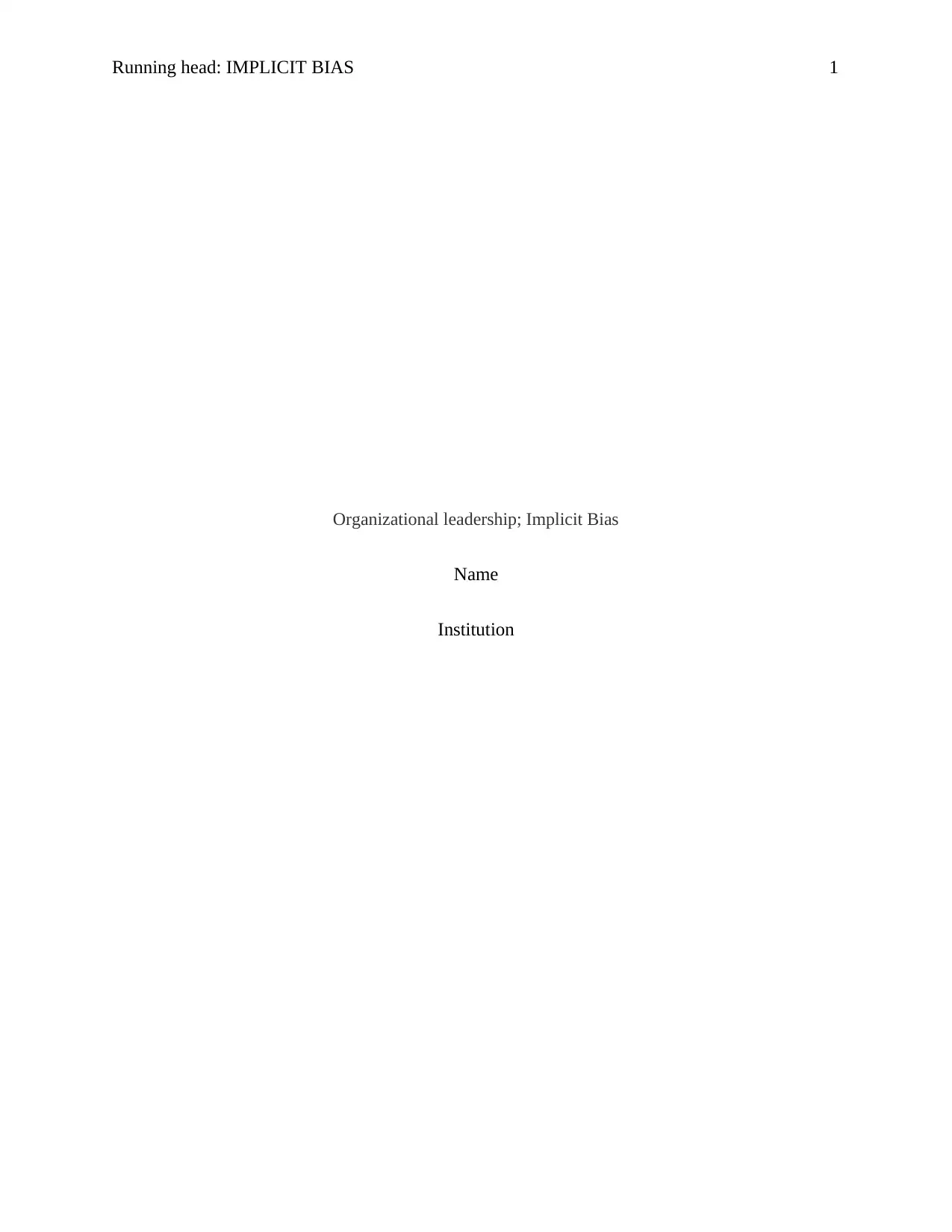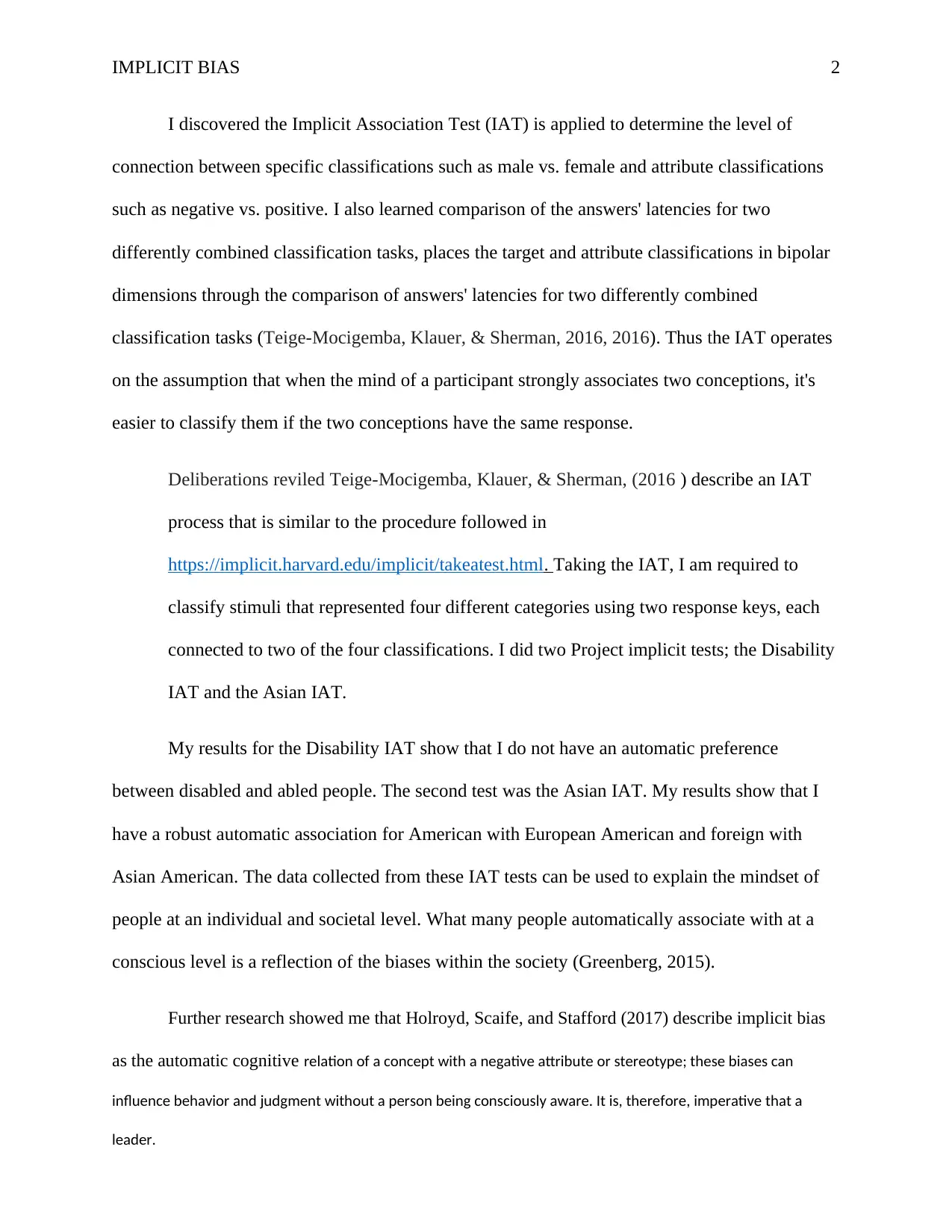Organizational Leadership and Implicit Bias: A Detailed Report
VerifiedAdded on 2023/04/22
|4
|813
|334
Report
AI Summary
This report delves into the concept of implicit bias within organizational leadership. It begins with an explanation of the Implicit Association Test (IAT) and how it's used to measure the strength of associations between different classifications, such as gender or ethnicity, and attributes like positive or negative. The report then discusses the implications of these unconscious biases in the workplace, including their impact on decision-making, team dynamics, and overall organizational performance. The author shares their personal IAT results, highlighting their biases, and explores strategies for mitigating these biases, such as self-awareness, training, and the implementation of inclusive policies. The report references several scholarly articles to support its claims and concludes by emphasizing the importance of creating an inclusive environment that values diversity.
1 out of 4





![[object Object]](/_next/static/media/star-bottom.7253800d.svg)